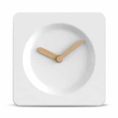Dental veneers give a protective cover to your teeth. The benefits include protecting chipped and cracked teeth, filling gaps, and hiding discolouration.
Most patients request veneers for the upper or lower front teeth. The upper front is the primary choice because it affects your smile the most. If the lower teeth do not receive veneers, consider whitening to match the colour of your top teeth and bonding to fix any damage, such as cracks or chips.
What are Dental Veneers?
Veneers are a decorative layer or “shell” of material that applies to your teeth. The primary materials used to create veneers are porcelain, ceramic, and composite.
Advantages and Disadvantages of Dental Veneers
Many pros and cons come with investing in dental veneers. The benefits outweigh the downfalls for most patients. Regardless, consider whether veneers are right for you by weighing the upsides and downsides.
Advantages
On a positive note, dental veneers are a simple solution for discolouration and moderately damaged tooth enamel. Veneers give back your smile confidence, hide permanent tooth discolouration, and help protect the enamel.
Disadvantages
Dental veneers are permanent, and removal is difficult and comes with the risk of damaging your tooth. Many patients report a sudden sensitivity to hot and cold. Additionally, veneers are not very practical for severe enamel decay. Consider other restorative dental treatments if veneers do not meet your needs.
When Should I Have Dental Veneers?
Dental veneers are recommended when your dentist can use a minimal permanent restorative method. In advanced enamel damage scenarios, alternatives must be considered, and this is where dental crowns are the difference maker. Crowns are approximately twice the thickness of veneers. With crowns, the options are full porcelain, porcelain fused with metal alloy, or pure metal alloy.
Different Types of Veneers
When it comes to dental veneers, the three main types are porcelain, ceramic, and composite. The quality varies, but a few characteristics make each material type different.
Porcelain Veneers
The go-to material for dental veneers is porcelain. Porcelain is the strongest type of veneer, lasts the longest, and is resistant to discolouration. This veneer type typically lasts 10 to 15 years and is almost entirely stain-resistant.
Ceramic Veneers
Ceramic is the second-best material for veneers and lasts for approximately ten years. These veneers are more durable than composite. Ceramic is recommended if your teeth suffer from severe dark discolouration.
Composite Veneers
Composite veneers are the least durable option and only last approximately four to eight years. Composite serves the same purpose of protecting the enamel. These veneers can be applied on the day you visit, while porcelain and ceramic are a long process. Composite discolours, and staining is quicker than with ceramic.
How are Veneers Applied to Teeth?
The answer to this question depends on which type of veneer you want.
How are porcelain veneers applied? Most patients do not require teeth shaving, but that will be the first step if needed. After getting the mould, the application will be made by adhering the veneer with a dental bonding material (glue or cement).
How are ceramic veneers applied? The process for ceramic is similar to porcelain. How are composite veneers applied? Your mould will be made and applied in the same appointment. These veneers are held onto the teeth using light to harden them.
Related: How Veneers are Done – Understanding the Basics
Consultation
When you first visit, your dentist will examine your teeth and decide the best course of action. Patients requesting porcelain or ceramic veneers will need dental impressions taken and sent to a lab to create the veneers. This process takes a bit of time and means you must return for another visit.
Preparation
Your dentist will apply temporary protective veneers on the teeth. These will come off after your dental impressions are turned into veneers and returned to the office. If you choose composite veneers, little to no preparation is necessary. Some dentists will sandblast the teeth to clean the surface.
Apply Your Dental Veneers
The application process is straightforward. Porcelain and ceramic veneers are applied with a dental bonding product. Composite veneers are applied using light that hardens the resin to hold it in place.
How to Take Care of Dental Veneers
Follow best oral health practices to maintain your veneers. Do everything you can to avoid gum disease. Go for regular cleanings and checkups. Remember that your dental veneers are an investment. While porcelain is strong enough to give you ten good years, ceramic and composite require more careful maintenance to achieve maximal longevity.
Book a Consultation for Dental Veneers
We’ve addressed the basics of your question, “how are dental veneers applied?” At Boon Dental, it’s our goal to educate patients as best as possible. Decide for yourself now. Are veneers the answer? If you’re still uncertain, come for a consultation and compare your options.
Check out our ‘Veneers’ service page for more info. Alternatively, if you know that veneers are in your near future—schedule an appointment to get seen.











